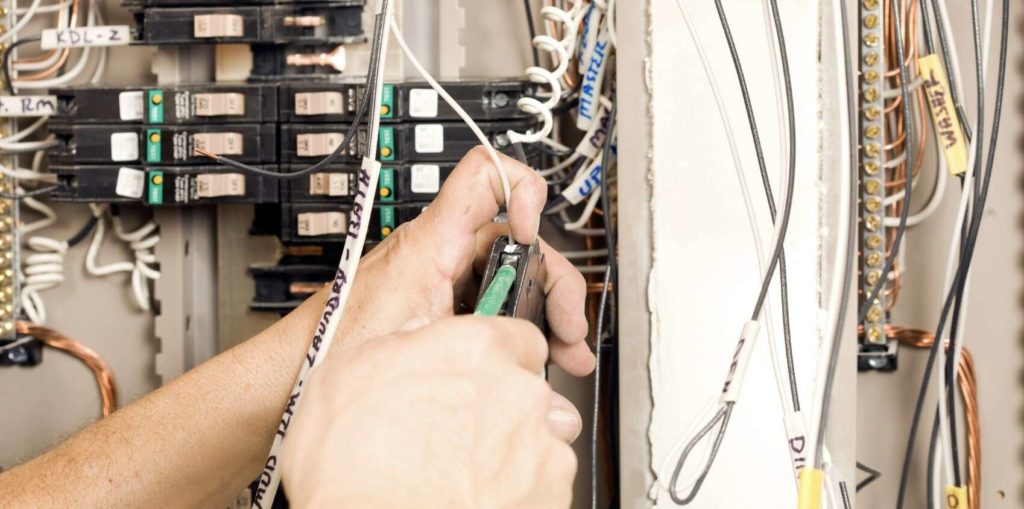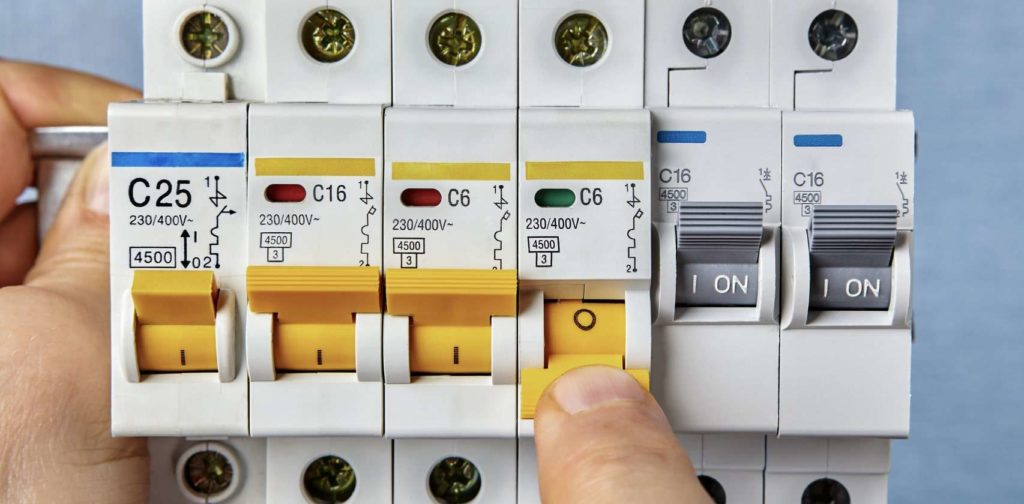The reasons why your arc fault breaker is constantly tripping at your house can be incorrect wiring and/or device or electrical circuit variances.
Besides that, a frequently tripping arc fault circuit interrupter (AFCI) might be attributed to a worn and damaged breaker and short circuits.
In the next sections, we will elaborate more on the possible reasons for a damaged arc fault breaker and give you some solutions.
1) Your AFCI breaker has a wiring problem

AFCI breakers can trip continuously due to a few problems with the wiring. The wiring may have been damaged, peeled, or loosened over time.
The wiring damage or peeling might have been brought on by animal bites or accidental nail hitting.
In response to this, the breaker will often trip the power supply with or without sparking to protect your home.
Aside from that, a ground fault, which leaks electricity out of its normal path to the ground, can also occur. In this event, a very high current will be produced which must be tripped.
Also, though they sound less grave, loose wires are dangerous in that they can cause the breaker to overheat and the wiring within to be damaged. And that will cost a significant amount to repair too.
One telltale sign of loose wires is if you see the AFCI lighting up when you reset the AFCI breaker.
How to fix it ⚡
Working with wiring is extremely dangerous especially if you’re not trained or certified. If you notice the wiring is damaged, exposed, or loose, dial for an electrician as soon as you can.
2) Some devices and appliances are incompatible with it

Another reason that your arc fault breaker keeps tripping is you’re using an older or incompatible electrical device or appliance.
Most of the time it happens to motor-equipped electronic equipment, like vacuums, treadmills, and power tools.
Although these technologies can have sparking inside them, which is nothing to worry about, the problem is the AFCI breaker sees it as dangerous and so it trips the power.
How to fix it ⚡
You can troubleshoot this problem by using the device linked to a different breaker. But if the breaker cuts the power again, then you can try the same product but of a different brand, as it might work.
3) You’re using more power than the breaker’s capacity

Our circuit breakers at home differ in their ratings or capacities. We can’t exceed their capacities because then they won’t be able to support our current electricity demands.
Still, if we push on it, whether by intention or accident, our house can experience overload or short circuits.
Due to these dangers, the wiring and its insulation can be badly damaged and the circuit can overheat.
Thus, they endanger the house, possibly causing hot sparks or deadly fires. But, again, the circuit breaker does its part to stop that from happening.
How to fix it ⚡
Do not simultaneously plug too many heavy-duty appliances or devices into a single circuit.
Moreover, as a precaution, it’s good to be aware of your home wiring’s current flow and resistance so you’d know your electrical use limits.
4) Your AFCI breaker is faulty

The arc fault circuit breaker can sustain gradual damage each time it trips or overloads.
When this reaches a certain degree, they can become unstable, one effect of which is constant tripping.
How to fix it ⚡
The best course of action is to have an electrician inspect the damage in the breaker and let them repair it if possible. The pro will ensure the unit’s correct installation and your and your family’s safety.
How do I troubleshoot my arc fault breaker?

Here are tips to troubleshoot your arc fault breaker safely:
- Don’t touch the breaker panel because it is high-voltage and risky. It can cause shock, electrocution, and serious injury.
- To find out the cause of the tripping of a certain circuit, unplug the appliances and turn off the lights connected to the circuit.
After that, reset the AFCI breaker and find out if any tripping has occurred. If even without any load in the circuit and still, the breaker tripped, there’s a fault in either the breaker or the particular circuit.
- However, if the circuit is fine even after you reset the breaker system, you can continue hunting for the cause.
For this, test out each of your lighting fixtures by turning off the switch one at a time. Then, plug in each device and appliance and see if there’s any tripping occurring.
That should pinpoint the source of the frequent tripping problem or what device has been causing it.
By the way, you could also try this out on another AFCI breaker to determine the root cause of the breaker tripping.
- To repair the breaker and its circuit lines or other related damages, we strongly recommend enlisting the help of a professional electrician.
The reason is that they will be able to perform the job safely and effectively and ensure the breaker and circuits are up to code for your utmost peace of mind.
FAQs about the Arc Fault Breaker

- What is an arc fault breaker?
An arc fault breaker is a circuit breaker that trips the electricity during arcing, thereby protecting the house and its occupants.
Arcing or arc fault is an instance when electricity skips over two pieces of wires because the wires are exposed at the ends, loose, or damaged.
Without the breaker, the arc fault has the potential to spark and catch fire. In America, 30,000 homes suffer fire and safety damage due to arcing each year.
- Why are arc fault breakers better than conventional models?
Arc fault breakers are better than conventional breakers because they not only protect your home from short circuits and overloading but also from arcing.
As a result, the house is safer to live in, and just in case too much load is used on the circuit, it will be tripped by the AFCI, saving you or your home from injury, damage, and money.
- Why can the AFCI breaker trip when I vacuum it?
Running the vacuum can trip the breaker because the device produces small sparks within it while in use, which is normal. However, the AFCI breaker detects this as a dangerous situation.
You can actually check how often this happens: If the breaker trips usually when you use the vacuum on it, it’s just nuisance tripping, but if it always trips, then an arcing problem may be behind it.




